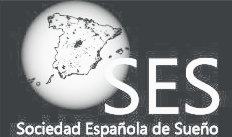The diagnostic method has a strong influence on classification of obstructive sleep apnea.
Escourrou P, Grote L, Penzel T, Mcnicholas WT, Verbraecken J, Tkacova R, Riha RL, Hedner J; ESADA Study Group. J Sleep Res. 2015 Dec;24(6):730-8. doi: 10.1111/jsr.12318. Epub 2015 Aug 14.
Collaborators (34)
Anttalainen U, Barbé F, Basoglu O, Bielicki P, Bonsignore MR, Cerrato C, Dumitrascu R, Esquinas C, Fairley D, Fietze I, Lopez A, Kvamme JA, Levy P, Sliwinski P, Kumor M, Lavie L, Lavie P, Lombardi C, Marrone O, Masa JF, Montserrat JM, Parati G, Pépin JL, Plywaczewski R, Pretl M, Ryan S, Roisman G, Saaresranta T, Schulz R, Steiropoulos P, Tasbakan S, Varoneckas G, Vrints H, Xanthoudaki M.
Polygraphy (PG) and polysomnography (PSG) are used in clinical settings in Europe for diagnosing obstructive sleep apnea (OSA), but their equivalence in unselected clinical cohorts is unknown. We hypothesized that the method would affect both diagnostic outcomes and disease severity stratification. Data from 11 049 patients in the multi-centre European Sleep Apnea Cohort (ESADA) with suspected OSA (male and female, aged 18-80 years) were used in two groups of patients to compare PG (n = 5745) and PSG (n = 5304). Respiratory events were scored using the 2007 American Association of Sleep Medicine (AASM) criteria. In subjects who underwent PSG, mean apnea-hypopnea index (AHI) using sleep time (AHIPSG 31.0 ± 26.1 h(-1) ) and total analysed time (TAT) (AHITAT 24.7 ± 22.0 h(-1) ) were higher than in subjects who underwent PG (AHIPG 22.0 ± 23.5 h(-1) ) (P < 0.0001). The oxygen desaturation index (ODI) was lower in subjects investigated with PG (ODIPG 18.4 ± 21.7 h(-1) ) compared to subjects investigated with PSG (ODIPSG 23.0 ± 25.3 h(-1) ) but not different when the PSG was indexed by TAT (ODITAT 18.6 ± 21.4 h(-1) , P < 0.65). The proportion of patients with an AHI ≥ 15 was 64% in the subjects who underwent PSG and 47% in the subjects who underwent PG (P < 0.001). Overall, patients investigated using PG are likely to have a 30% lower AHI on average, compared to patients investigated by PSG. This study suggests that PG interpreted using standard guidelines results in underdiagnosis and misclassification of OSA. We advocate the development of PG-specific guidelines for the management of OSA patients.
Ventana Científica. Diciembre 2015. Artículo 68
The diagnostic method has a strong influence on classification of obstructive sleep apnea.


